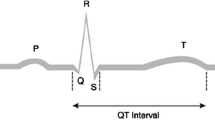Abstract
During the clinical development of oncology therapeutics, new safety biomarkers are being employed with broad applications and implications for risk management and regulatory approval. Clinical laboratory results, used as safety biomarkers, can influence decision making at many levels during the clinical development and regulatory review of investigational cancer therapies, including (1) initial eligibility for protocol therapy; (2) analyses used to estimate and characterize the safety profile; and (3) treatment delivery, based on specific rules to modify or discontinue protocol treatment. With the increasing applications of safety biomarkers in clinical studies, consideration must be given to possible unintended consequences, including (1) restricted access to promising treatments; (2) delays in study completion; and (3) limitations to dose delivery, escalation, and determination of the maximal tolerated dose, the recommended phase 2 dose, and the optimal biologic dose selected for registration studies. This review will compare and contrast 2 biomarkers for cardiac safety that are employed in an increasing number of clinical programs designed for investigational oncology therapeutics: (1) assessment of left ventricular ejection fraction by either echocardiography or multigated acquisition scan; and (2) electrophysiological measurement of QT/QTc duration, assessed by electrocardiogram, for predicting risk of a potentially fatal arrhythmia called torsades de pointes. While these and other new safety biomarkers have major value in the development of oncology therapeutics, their applications require careful consideration to avoid unintended consequences that could negatively affect (1) the care of patients with advanced malignancy and (2) the advancement of promising new agents.
Similar content being viewed by others
References
Bross PF, Beitz J, Chen G, et al. Approval summary: gemtuzumab ozogamicin in relapsed acute myeloid leukemia.Clin Cancer Res. 2001;7:1490–1496.
CTC v2.0 and CTCAE v3.0 Webpage. National Cancer Institute. Available at: http://ctep.cancer.gov/reporting/ctc.html. Accessed March 1, 2006.
Official Website. The International Conference on Harmonisation of Technical Requirements for Registration of Pharmaceuticals for Human Use. Available at: http://www.ich.org. Accessed March 1, 2006.
Floyd JD, Nguyen DT, Lobins RL, Bashir Q, Doll DC, Perry MC. Cardiotoxicity of cancer therapy.J Clin Oncol. 2005;23:7685–7696.
Yeh ET, Tong AT, Lenihan DJ, et al. Cardiovascular complications of cancer therapy: diagnosis, pathogenesis, and management.Circulation. 2004;109:3122–3131.
Romond EH, Perez EA, Bryant J, et al. Trastuzumab plus adjuvant chemotherapy for operable Her-2 positive breast cancer.N Engl J Med. 2005;353:1673–1684.
Perez EA, Suman VJ, Davidson NE. Interim cardiac safety analysis of NCCTG N9831 Intergroup adjuvant trastuzumab trial. In:J Clin Oncol. vol. 23(suppl):17s. 2005: Abstract 556.
Holden SN, Eckhardt SG, Basser R, et al. Clinical evaluation of ZD6474, an orally active inhibitor of VEGF and EGF receptor signaling, in patients with solid, malignant tumors.Ann Oncol. 2005;16:1391–1397.
Ewer MS, Lippman SM. Type II chemotherapy-related cardiac dysfunction: time to recognize a new entity.J Clin Oncol. 2005;23:2900–2902.
Burris HA III, Hurwitz HI, Dees EC, et al. Phase I safety, pharmacokinetics, and clinical activity study of lapatinib (GW572016), a dual reversible inhibitor of epidermal growth factor receptor tyrosine kinases, in heavily pretreated patients with metastatic carcinomas.J Clin Oncol. 2005;23:5305–5313.
Isotalo PA, Greenway DC, Donnelly JG. Metastatic alveolar rhabdomyosarcoma with increased serum creatine kinase MB and cardiac troponin T and normal cardiac troponin I.Clin Chem. 1999;45:1576–1578.
Britten CD, Rowinsky EK, Soignet C, et al. A phase I and pharmacological study of the farnesyl protein transferase inhibitor L-778,123 in patients with solid malignancies.Clin Cancer Res. 2001;7:3894–3903.
Barbey JT, Pezzullo JC, Soignet SL. Effect of arsenic trioxide on QT interval in patients with advanced malignancies.J Clin Oncol. 2003;21:3609–3615.
Varterasian M, Meyer M, Fingert H, et al. Baseline heart rate-corrected QT and eligibility for clinical trials in oncology.J Clin Oncol. 2003;21:3378–3379.
Piotrovsky V. Pharmacokinetic-pharmacodynamic modeling in the data analysis and interpretation of drug-induced QT/QTc prolongation.AAPS J. 2005;7:E609-E624.
Varterasian M, Fingert H, Agin M, et al. Consideration of QT/QTc interval data in a phase I study in patients with advanced cancer.Clin Cancer Res. 2004;10:5967–5970.
Morganroth J, Brozovich FV, McDonald JT, et al. Variability of the QT measurement in healthy men, with implications for selection of an abnormal QT value to predict drug toxicity and proarrhythmia.Am J Cardiol. 1991;67:774–776.
Furberg B. Surrogate markers—substitute measurements: easy to measure but irrelevant?Lakartidningen. 2002;99:1672–1675 In Swedish.
Author information
Authors and Affiliations
Corresponding author
Rights and permissions
About this article
Cite this article
Fingert, H., Varterasian, M. Safety biomarkers and the clinical development of oncology therapeutics: Considerations for cardiovascular safety and risk management. AAPS J 8, 10 (2006). https://doi.org/10.1208/aapsj080110
Received:
Accepted:
Published:
DOI: https://doi.org/10.1208/aapsj080110




